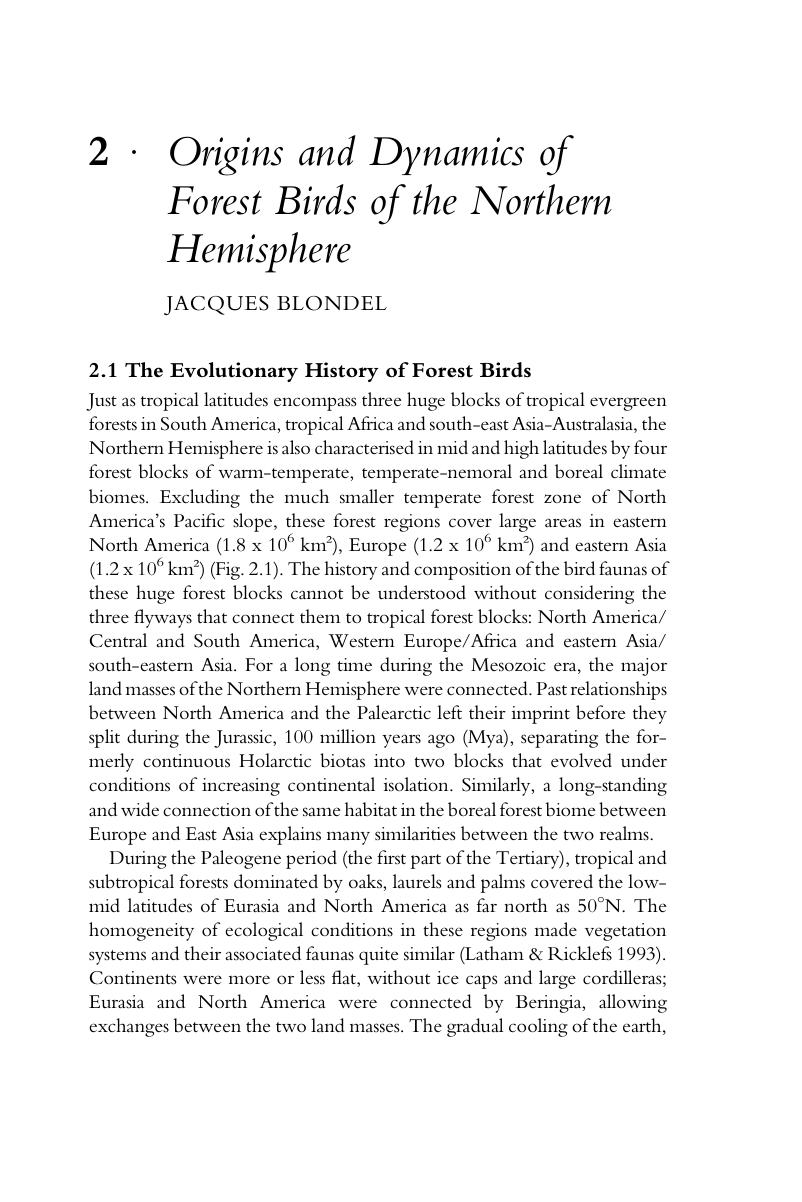Book contents
- Ecology and Conservation of Forest Birds
- Ecology, Biodiversity and Conservation
- Ecology and Conservation of Forest Birds
- Copyright page
- Contents
- Acknowledgements
- Contributors
- 1 Introduction
- Part I Forest Birds and Their Adaptations
- 2 Origins and Dynamics of Forest Birds of the Northern Hemisphere
- 3 Ecological Adaptations of Birds to Forest Environments
- 4 Tree Holes and Hole-Nesting Birds in European and North American Forests
- Part II European Forests and Their Bird Communities
- Part III Conservation and Management
- Species Index
- Subject Index
- References
2 - Origins and Dynamics of Forest Birds of the Northern Hemisphere
from Part I - Forest Birds and Their Adaptations
Published online by Cambridge University Press: 15 March 2018
- Ecology and Conservation of Forest Birds
- Ecology, Biodiversity and Conservation
- Ecology and Conservation of Forest Birds
- Copyright page
- Contents
- Acknowledgements
- Contributors
- 1 Introduction
- Part I Forest Birds and Their Adaptations
- 2 Origins and Dynamics of Forest Birds of the Northern Hemisphere
- 3 Ecological Adaptations of Birds to Forest Environments
- 4 Tree Holes and Hole-Nesting Birds in European and North American Forests
- Part II European Forests and Their Bird Communities
- Part III Conservation and Management
- Species Index
- Subject Index
- References
Summary

- Type
- Chapter
- Information
- Ecology and Conservation of Forest Birds , pp. 11 - 50Publisher: Cambridge University PressPrint publication year: 2018
References
- 6
- Cited by

